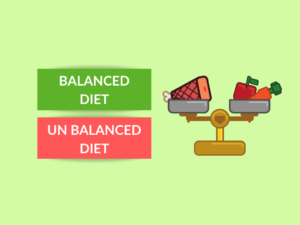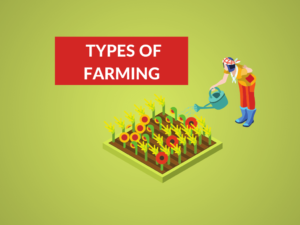What is/are cage free?
Cage-free refers to a method of raising poultry where chickens are allowed to roam freely within an enclosed area, rather than being confined to individual cages. Cage-free systems provide more space and allow for natural behaviors such as walking, spreading wings, and nesting.
Examples of cage free:
1. Barn: In a barn-style cage-free system, chickens are raised indoors within a large open space, similar to a barn. They have freedom of movement but are kept inside for their safety and protection.
2. Aviary: Aviary systems are equipped with multiple tiers and perches, providing a more stimulating environment for chickens. The chickens can move across different levels, jump, and fly short distances.
3. Free-roaming: In this system, chickens are completely free to roam indoors and outdoors. They have access to a designated indoor area for protection and an outdoor space for foraging.
Uses of cage free:
– Improved animal welfare: By allowing chickens to move freely, cage-free systems offer better living conditions, reducing stress and preventing health issues caused by confinement.
– Natural behaviors: Cage-free environments enable chickens to engage in natural activities like social interactions, nesting, foraging, and dust bathing, promoting their overall well-being.
– Consumer demand: Many consumers prefer purchasing eggs and poultry products from cage-free systems, supporting animal welfare and sustainable farming practices.
What is/are free range?
Free-range refers to a farming method that provides chickens with access to the outdoors. In free-range systems, chickens are not confined to indoor spaces and have the opportunity to roam and forage in open areas. They can exhibit natural behaviors and enjoy a more varied diet.
Examples of free range:
1. Pasture-based: In this type of free-range system, chickens are allowed to roam large open pastures during the day, feeding on natural vegetation and insects. At night, they may be housed in a shelter for safety.
2. Backyard farming: Some people keep chickens in their own backyards, allowing them to freely range and interact with the environment. This form of free-range farming is common among sustainable and self-sufficient households.
3. Farm-based: Certain farms provide outdoor access to chickens through fenced areas or open ranges. They are given the freedom to explore and find food outside their indoor enclosures.
Uses of free range:
– Healthier chickens: Free-range systems allow chickens to engage in exercise, exposing them to natural sunlight and fresh air. This contributes to their overall health and reduces the risk of diseases caused by overcrowding.
– Improved product quality: The natural diet and exercise obtained in free-range systems can lead to enhanced taste, texture, and nutritional profile of eggs and meat, satisfying consumer preferences.
– Environmental benefits: Free-range farming can have a lower environmental impact as chickens contribute to fertilizing the soil, pest control, and diversification of plant and insect species.
Differences between cage-free and free-range:
| Difference Area | Cage Free | Free Range |
|---|---|---|
| Space | Provided with more space to move within an enclosed area. | Allowed access to both indoor areas and outdoor spaces, offering more extensive roaming opportunities. |
| Outdoor Access | No access to the outdoors. | Given access to outdoor areas like pastures or yards. |
| Living Conditions | Can still be kept indoors, but with better freedom of movement and natural behavior. | Allowed to roam indoors and explore the outdoor environment, leading to more diverse living conditions. |
| Natural Behaviors | Permit natural behaviors within enclosed spaces. | Facilitate natural behaviors such as foraging, dust bathing, and finding shelter outdoors. |
| Risk of Predators | Lower risk due to confinement. | Higher risk due to outdoor access. |
| Product Cost | Generally less expensive due to the lower production costs. | May be slightly more expensive due to additional infrastructure needed and higher production costs. |
| Consumer Perception | Regarded as an improvement over traditional cage systems but may not meet the highest standards of animal welfare. | Seen as a higher welfare system due to outdoor access, aligning with consumer preferences for ethically produced products. |
| Egg Quality | Egg quality can vary based on the housing conditions and bird health. | Outdoor access and varied diet can result in a richer and more natural flavor profile. |
| Egg Production | Steady egg production due to controlled environments. | Egg production may be slightly lower due to increased physical activity and environmental factors. |
| Social Interactions | May have limited social interactions due to space restrictions. | Have more opportunities for socialization and flock interactions. |
Conclusion:
In conclusion, cage-free and free-range systems both offer improvements over conventional cage systems, allowing for more humane treatment of chickens. Cage-free systems provide more space for movement within enclosed areas, while free-range systems provide outdoor access, allowing chickens to experience natural behaviors and varied diets. The main difference lies in the level of freedom and outdoor opportunities provided.
People Also Ask:
1. What are the main advantages of cage-free farming?
Cage-free farming provides improved animal welfare by allowing chickens to move freely, exhibit natural behaviors, and experience less stress. It also caters to consumer demands for ethical and sustainable farming practices.
2. Does free-range mean the same as organic?
No, free-range and organic are separate certifications. Free-range refers to the chickens’ access to the outdoors, while organic refers to the feed and production methods used. An organic product may or may not be free-range, and vice versa.
3. Are free-range eggs healthier?
Free-range eggs may have higher levels of omega-3 fatty acids and vitamin D due to the varied diet of the chickens. However, the nutritional content can vary based on factors such as the breed of the hen and its feed.
4. Do cage-free and free-range chickens taste different?
The taste of eggs and meat from cage-free and free-range chickens can differ slightly. Free-range chickens have the opportunity to forage and consume a more diverse diet, which may result in a richer and more natural flavor profile.
5. Are there any regulations governing cage-free and free-range farming?
Different countries and regions have varying regulations on cage-free and free-range farming. It is advisable to look for third-party certifications or labels that indicate compliance with specific animal welfare standards.



